On Saturday, 11 July 2015, Jack and I decided to go checkout the shorebirds along the Anchor Point Beach and the Anchor River. When we neared the parking lot at the end of the road, there were cars on both sides. And both parking lots were full. Must have been a good day to fish. Indeed, a calm ocean framed under a sunny, blue sky with some of those huge clouds that stir the imagination, warm, with winds less than 5 mph. Beautiful, perfect weather for a beach stroll. On the beach the boat trailers were stacked up in two rows – a first. There must have been over 30 trailers on the beach.
What was surprising, especially with dead fish carcass remains scattered about, was there were few Bald Eagles present. I only counted four – two adults and two juveniles or immatures. Last time I was out here there were at least 20 Bald Eagles searching for Halibut and other fish remains the fisherman throw overboard and subsequently wash up on the beach – at least that is what I assume they do.
There were a lot of gulls on the beach – a conga line of a mixed flock of over 500. Most of the gulls were Glaucous-winged Gulls, but there were also Herring Gulls, Herring x Glaucous-winged hybrids, Mew Gulls, at least one Black-legged Kittiwake, and the OMG kicker! three Caspian Terns. The Caspian Terns were quite the surprise. In our old stomping grounds of Oregon the birds are considered nuisance birds (to some people -not me) along the Columbia River, nesting on dredge spoil created islands, were they breed and partake of salmon smolts migrating to the ocean. But in Alaska the birds are rare, although there are more and more sightings annually. This is one big tern.

Glaucous-winged Gull and Herring Gull (or hybrid?). Notice the difference in size, the wing tips, and the eyes.
Another surprise find was a Fork-tailed Storm-Petrel feeding along the shoreline. The bird would swoop along the shoreline in search of food, occasionally landing on the ocean. Back and forth, back and forth.
A large flock of Turnstones flew onto the beach. In addition to the Black Turnstones, I did spot 1 Ruddy Turnstone. There may have been more, but a free-wheeling 4-wheeler (ATV) came roaring down the beach right next to the shoreline, flushing anything in its path – obviously not a birder…. I estimate there were over 100 turnstones in the flock.
We continued down the beach and occasionally spotted a separate small flock of Black Turnstones. They never did stay in one place long enough for me to get close for a photo op. Of course one can never have too many bird photos.
At the end of the beach and the mouth of the Anchor River, I spotted several people camping. This is the first time I’ve ever seen anyone camping at the mouth. Most likely they are people fishing the river, although there was one boat trailer parked there also.
Jack is getting over a cold so he didn’t walk to the end of the beach with me. Rather he found a nice log and decided to just enjoy the sun and the birds.
On the way back we stopped at a little wetland along the river. You can usually find shorebirds here during migration. We observed two Greater Yellowlegs feeding.
Later, we did see a mixed flock of Black Turnstones – about twenty – and 8 Whimbrels. They landed several times on the beach but didn’t stay long. Always some human activity around causing them to flush.
At both the start and the end of our walk on the beach we came across a few Northwestern Crows. There weren’t as many crows on the beach as normal either. I also spotted a song sparrow searching for food. I don’t see many Song Sparrows in the Homer area so always fun to get a glimpse of one.
In all we observed or heard the following 22 species (we weren’t lugging the spotting scope so probably missed some ocean activity).
Bank Swallow
Harlequin Duck
Bald Eagle
Black-billed Magpie
Song Sparrow
Spotted Sandpiper
Black-legged Kittiwake
Savannah Sparrow
Northwestern Crow
Common Loon
Surf Scoter
Fork-tailed Storm-Petrel
Mew Gull
Caspian Tern
Glaucous-winged/Herring Gull hybrid
Herring Gull
Glaucous-winged Gull
LESA/WESA/SESA
Whimbrel
Ruddy Turnstone
Black Turnstone
Greater Yellowlegs
It was a GREAT DAY TO BIRD

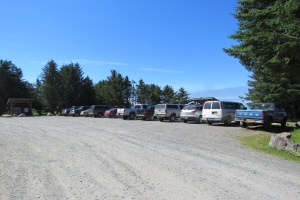
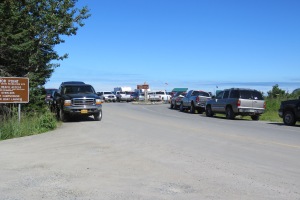

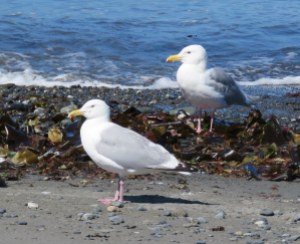


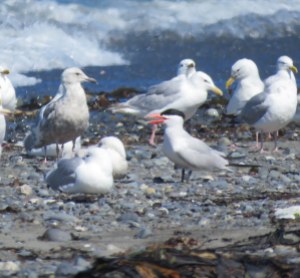







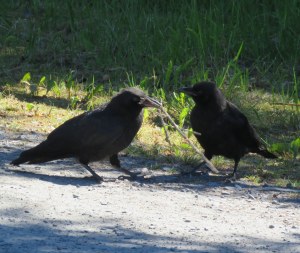






















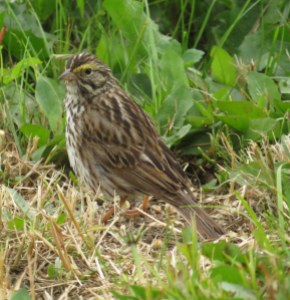


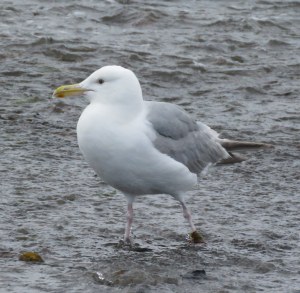

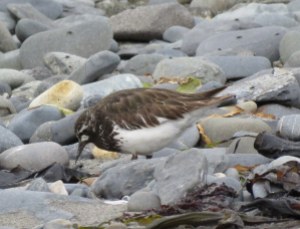




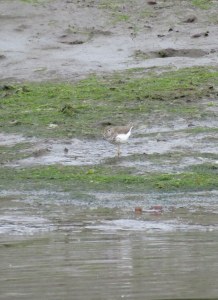


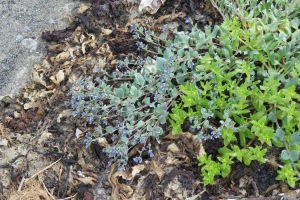


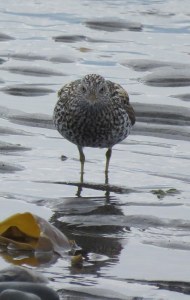


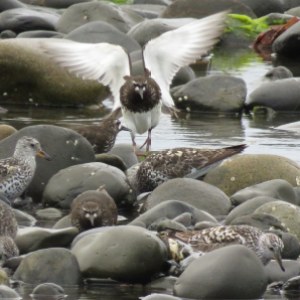

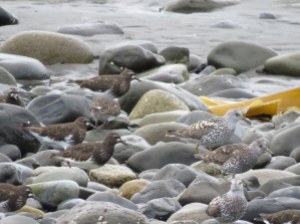

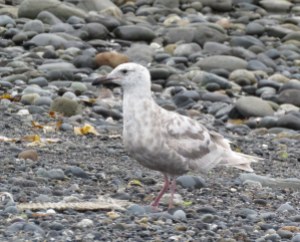
Recent Comments